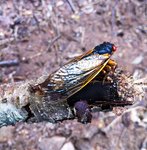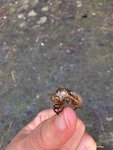 Narrowsburg
NarrowsburgLight Rain Fog/Mist, 43°
Wind: 8.1 mph
 Narrowsburg
NarrowsburgForests of the Upper Delaware River region are currently filled with the sounds of summer insects. I enjoy hearing them signal the rising heat of the day, or falling asleep with the windows open as …
Stay informed about your community and support local independent journalism.
Subscribe to The River Reporter today. click here
This item is available in full to subscribers.
Please log in to continue |


Forests of the Upper Delaware River region are currently filled with the sounds of summer insects. I enjoy hearing them signal the rising heat of the day, or falling asleep with the windows open as the mesmerizing calls bring the night alive. Human-generated sounds like automobiles and airplanes fade away as nature’s soundscape notches up with the buzz of insects such as katydids and cicadas.
I recently came across a cicada exoskeleton (the molted skin of the insect) in my yard. Cicadas begin life as rice-shaped eggs deposited into the grooves of a tree’s bark by a female using her ovipositor. When the eggs hatch, the young cicadas, which resemble tiny termites, feed on tree fluids before falling to the ground. There they tunnel into the earth to continue feeding on the tree’s roots. Cicadas have a beak (or rostrum), which they use to suck xylem from plants.
Depending on the species, cicadas emerge from the ground between two to 17 years later as nymphs. They climb the nearest tree and shed their exoskeleton, allowing their wings to fill with fluid and their new skin to harden. Adults then complete the lifecycle by mating, with males calling for females by flexing drum-like organs called tymbals in their abdomens.
There are more than 190 varieties of cicadas in North America and more than 3,390 varieties around the world. Development practices such as clearcutting and paving can destroy populations by eliminating the insects’ food source.
Visit tinyurl.com/3tl8lyw to view a video of a calling cicada filmed in Franconia, PA. Learn more about cicadas at www.cicadamania.com.
Comments
No comments on this item Please log in to comment by clicking here